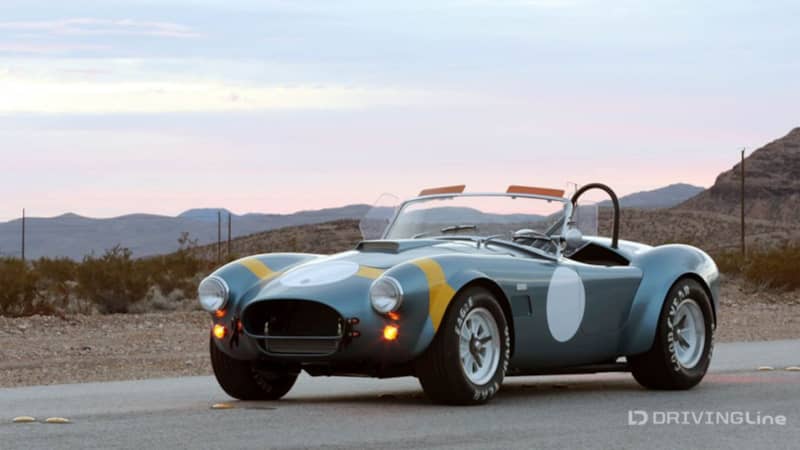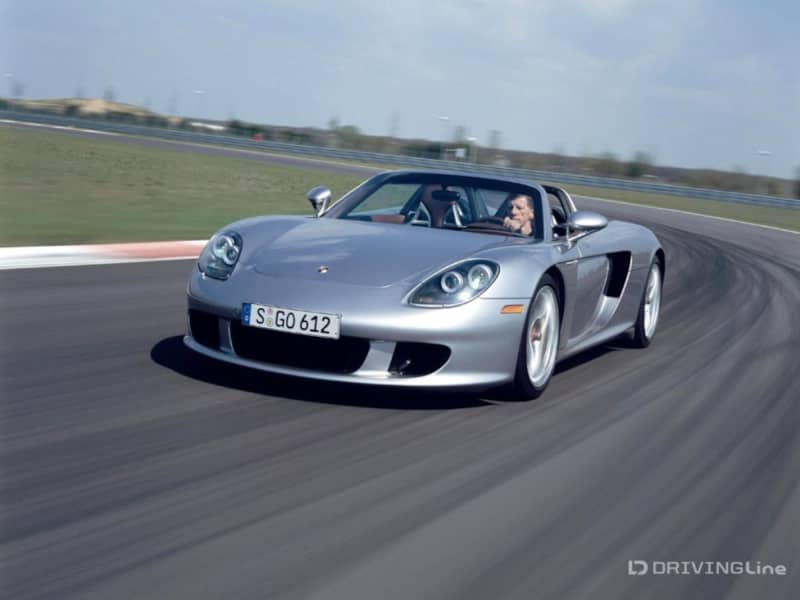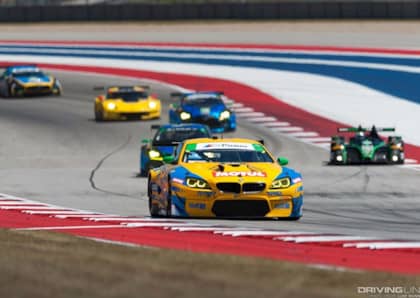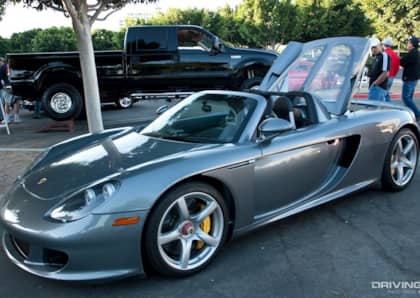Then and Now: 60 Years of Sportscars
Continuing on this month's "Then & Now" series, today we're taking a look at the iconic sportscar with a quick snapshot or two of a vehicle from each decade begining with...
1954 - Jaguar XK140
During the 1950s the line between a race car and a road-going car was both razor thin and often crossed. A sports car during this era put an emphasis on “sport” and many were truly meant for competition. The ‘50s were really interesting because World War II had advanced technology greatly and there were many more high-strung mechanics per capita than before the war. Put the two together, add a desire for speed, stand back, and watch the fireworks. 
Maserati 250F

1964 - Ford Mustang
Representing the significant Golden Anniversary, a lot of attention has been focused on 1964. Making it 50 years is big news. Some of the other notable 50th birthdays include G.I. Joe, Beatlemania, the Sharpie permanent marker, the miniskirt, the Easy Bake Oven, and the Hemi 426. 
Shelby Cobra FIA 289

Speaking of Carroll Shelby, another one of my favorite automotive personalities, he was already working his magic with Fords in ’64. In fact 2014 is the Golden Anniversary of the FIA version of the small-block Cobra, which competed in the 1964 World Manufacturers Championship series against marques like Aston Martin, Jaguar and Corvette. To celebrate the birth of the 289 Ford-powered roadsters, Shelby is offering 50 limited edition continuation (CSX7000 pictured) Shelby 289 FIA Cobras. Each will be painted Viking Blue with FIA stripes and roundels, feature a black FIA interior, special billet anniversary badges, original style wheels and a variety of additional options. This is a flashback to the future type of scenario, for a car that is serious Bucket List material for most any enthusiast with a heartbeat. Honorable mention: Ferrari 275, Fiat 850, Sunbeam Tiger, Pontiac GTO
1974 - Lamborghini Countach
In 1974 the American automotive juggernaut that was musclecar-mania found itself at the bitter end of the line. Oil shortages, environmental concerns, and a disengaged public sucked the power right out the American performance car market. Soon, V8s would be burdened with smog pumps and choked back to 150 horsepower. Classic movies like “Gone In 60 Seconds” and “The Man With The Golden Gun” did their best to uphold the automobile’s cool factor, but America was in for a struggle. A Super Bowl ad in ’74 cost $103,000. 
1984 - Ferrari Testarossa
Bust out the poofy hair, white slacks, pastel shirts and suit coats with rolled up sleeves, it’s the ‘80s. Michael Jackson is making waves with a famous Pepsi commercial, Madonna is just making waves, Frankie Goes To Hollywood urges us to "Relax,” Arnold first said, “I’ll be back,” and Michael Dell started selling computers to the people. A Super Bowl ad hit the wallet for $384,000. 
1994 - Ferrari F355
Things were humming along in America in 1994. “Life was like a box of chocolates,” according to Forrest Gump, O.J. Simpson made his famous dash for freedom in a white Ford Bronco, and we lost grunge rocker Kurt Cobain and comedian John Candy…there were bumps in the road. In automotive news, Christian Von Koenigsegg founded a car company but he wouldn’t produce his first street legal car until 2002. Super Bowl ad: $900,000. 
2004 - Aston Martin DB9
Can you believe Facebook is 10 years old in 2014? Yep, the Facebook was born in 2004. In other news… Boston Red Sox broke the Curse of the Bambino. Legend has it the Red Soxs were cursed to never win a championship again because they traded the all-time great Babe Ruth to the New York Yankees. It was 86 years between World Titles for the Sox, so Boston was celebrating at Tea Party levels when the Sox swept the Cards. In the NFL, the New England Patriots won the Super Bowl but the halftime festivities made quite the splash as Janet Jackson was afflicted with the Wardrobe Malfunction while grinding on stage with Justin Timberlake. Super Bowl ad: $2.3 Million. 
Porsche Carrera GT

Produced from 2004 to 2007 the Carrera GT is more race car than road car. The car’s mid-mounted V10 started life as a Formula 1 engine built in secret for the Footwork Formula 1 team in the early ‘90s. It was later dusted off for use in a late ‘90s version of Porsche’s 911 GT1 and LMP1 racers. Rules changed and the engine was once again on the shelf. Fast-forward to the 2000 Paris Motor Show and the Carrera GT Concept dropped so many jaws the 612-horsepower, 5.7-liter V10 finally found a place to land. Porsche pumped out 1,270 examples and even at $450,000 per copy had no problem selling the lot - sleek supercars. Honorable mention: Ferrari F430, Ferrari 612 Scaglietti, TVR Sagaris, Pontiac Solstice
2014 - Lamborghini Huracán LP 610-4
Today it’s hard to project forward and identify the cool, cultural trends of 2024. Wearable devices like Google glasses and intuitive artificial intelligence is entering mainstream (smartphones are already completing our texts, will they take our thoughts right from our stream of consciousness next?). Will zombies, selfies, gaming, and hip-hop still be relevant in another 10 years? Let’s just try to enjoy the ride… Super Bowl ad: $4 Million ($133,000 per second). 











